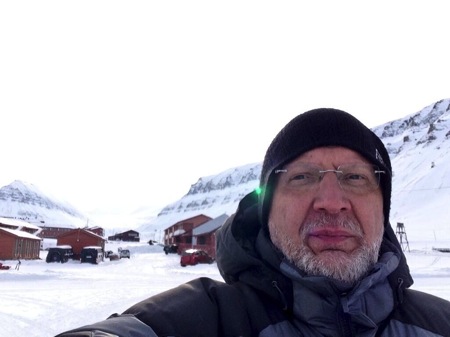- Gene bank of sources of spring wheat resistance to leaf-stem diseases. Crop wild relatives to the rescue.
- Evolutionary History of Wild Barley (Hordeum vulgare subsp. spontaneum) Analyzed Using Multilocus Sequence Data and Paleodistribution Modeling. Recently collected material gives different results to genebank accessions, suggesting geneflow during ex situ maintenance?
- Barley genetic variation: implications for crop improvement. “Contemporary plant breeders now benefit from publicly available user-friendly databases providing genotypic and phenotypic information on large numbers of barley accessions.” Barley Genebank Database Heaven? Should talk to the guys above?
- Detection of genetic integrity of conserved maize (Zea mays L.) germplasm in genebanks using SNP markers. Oh crap, that problem with ex situ barley maintenance is an issue with maize as well.
- Incidence of Seed-Borne Mycoflora in Wheat and Rice Germplasm. Oh, I give up, genebanks are doomed.
- Ethnophytopathology: Rice Fields Free of Diseases, from the Culture of Producers in a Nuquí, Chocó-Colombia´s Community. Careful placement of fields in the landscape ensures they don’t get diseases. Who needs genebanks and breeders?
- Farm production diversity is associated with greater household dietary diversity in Malawi: Findings from nationally representative data. Yeah, but settle down, it’s kinda complicated.
- Landscape fragmentation and pollinator movement within agricultural environments: a modelling framework for exploring foraging and movement ecology. Don’t know how your set-asides and whatnots are going to affect pollinators? Well, now there’s a spatially explicit model for that. Which could perhaps be applied to…
- Complex effects of fragmentation on remnant woodland plant communities of a rapidly urbanizing biodiversity hotspot. Would be so interesting to know if there were any socioconomically useful plants (including crop wild relatives) among these remnants.
- Gender, Seeds and Biodiversity. Whether in Pennsylvania or Peru, it’s women that save seeds. (This is from an old book, which has presumably just been digitized, hence its appearance in my RSS feed.)
- Land Use Dynamics, Climate Change, and Food Security in Vietnam: A Global-to-local Modeling Approach. Agriculture is at risk. Better collect all that germplasm. Right? Right?
- Responses of plants, earthworms, spiders and bees to geographic location, agricultural management and surrounding landscape in European arable fields. Mineral N and pesticides not good for agricultural biodiversity. Too bad you can’t really conserve earthworms ex situ.
- Identification and evaluation of major quality characters of introduced sweet potato germplasm resources. 4 accessions out of 32 from CIP were likely to prove very useful, for different reasons. I’d say that was pretty good.
- Conservation and use of genetic resources of underutilized crops in the Americas – A continental analysis. Some underused crops are more underused than others, but policies don’t help any of them much.
- And this week’s theme, I’ve just realized, somewhat belatedly, is the complementarity of ex situ and in situ conservation. No, really, go back and check. And it was purely by chance too.
There he is!
Where in the world is Luigi Guarino?

The moment he (and we) have been waiting for: #luigigoestosvalbard.
Let’s get that #hashtag trending.
Brainfood: By-the-numbers Indian edition, with a touch of Bangladesh
- SGDB: A Sugarcane Germplasm Database. Cool, but only 131 accessions? One would have thought there’d be more.
- Essential Oil Composition of Bothriochloa bladhii (Retz.) S.T. Blake: An Introduction from Tropical Region of Western Ghats of India. It’s a widespread neotropical grass. There are about 200 accessions in the world’s genebanks. I wonder if this lot will end up there too.
- Conservation of agricultural biodiversity – an experience in the Chotonagpur plateau region. By the Indian Statistical Institute, Giridih. 40 horsegrams collected, among other things. Does NBPGR know? Is there a database?
- Genome Classification of Musa cultivars from Northeast India as Revealed by ITS and IRAP Markers. 36 out of 38 cultivars had been correctly identified on morphology. Relationship to the national banana collection unclear.
- Correlation and Path Coefficient Analysis of Quantitative Characters in Spine Gourd (Momordica dioica Roxb.). Now we know what to select for. 50 accessions used.
- Population structure and genetic diversity analysis of Indian and exotic rice (Oryza sativa L.) accessions using SSR markers. Microsat study of 82 Asian genotypes, including some from India, identifies a few markers of use in breeding. Wheel successfully re-invented.
- Livelihood and Revenue: Role of rattans among Mongoloid tribes and settlers of Andaman and Nicobar Islands, India. Sources of food, building materials and money (via export trade), but only if harvesting is sustainable, which it doesn’t look like it is. Need a plan, including better silviculture and rotational harvesting. Oh, and get rid of the middlemen.
- Bioprospecting, biopiracy and food security in India: The emerging sides of neoliberalism. All of the above are potential neoliberal stooges.
- Comparative karyomorphological studies of three edible locally important species of Allium from India. A chive is not a chive is not a chive. But it’s hard work to tell them apart.
- Crop diversification, crop and energy productivity under raised and sunken beds: results from a seven-year study in a high rainfall organic production system. Rotations including vegetables all round better than rice monocropping. Nothing neoliberal about that. But who does nothing but rice monocropping? I guess these guys could tell you…
A food historian at CIMMYT
Noted food historian Rachel Laudan was at the recent Borlaug Summit on Wheat for Food Security in Obregón, Mexico, organized by CIMMYT to celebrate 100 years of Norman Borlaug, and what an inspired decision it was to invite her. She spoke at the conference about the foundational role of wheat in the development of civilization, and I hope her slides and perhaps even a video of her presentation, along with those of the other distinguished speakers, will be made available. In the meantime, her blog post on the experience provides a refreshingly different perspective than is usually provided by participants at this sort of conference. 1 Too bad she didn’t get to see the CIMMYT genebank…